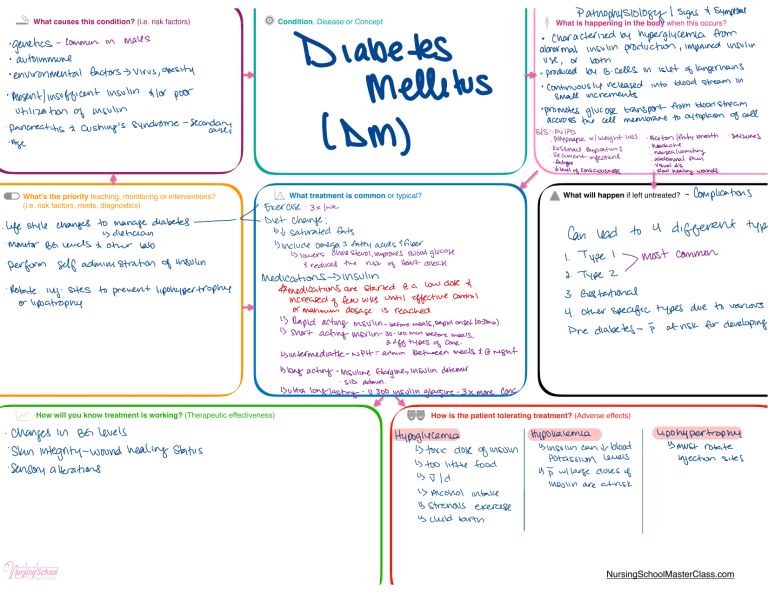
What causes this condition? (i.e. risk factors)
genetics
•
◦
•
insufficient
pancreatitis
•
2
Insulin
& Ior
poor
tubulin
Cushing
◦
-
[
Secondary
causes
Age
)
SIS :
-
-
life
-
'
•
changes
style
to
manage diabetes
self
<
-
Rotate
or
iuj
-
Diet
to
prevent hpohybertrc.PH
change ;
increased
q few
acting
insulin
bnsvlln
-
acting
-
NPH -
Insulin
-
•
SID
↳ ultra 10h8
lasting
-
a
effective
before meals
dff types of
Changes
•
Stan
In
BG levels
Integrity
Sensory
-
wound
alterations
healing
-
care
Glarglhei Insulin
Type
I
Type
2
-
senores
Pain
Visual S's
slow
healing wounds
-
Complications
>
Gestational
4.
other
different
4
to
3-
pre
Most
specific types
diabetes
_
§
due
at risk
to
for
various
developing
night
detour
.
U 300 insulin
glarglre
-3 ✗ more
CMC
-
How is the patient tolerating treatment? (Adverse effects)
↳ toxic dose of insulin
↳ too little
↳ J
child
↳ insulin contr
potassium
tsp
wl
large
Insulin
↳ strands
↳
food
Id
↳ Nicotra
UPO hypertrophy
Hypokalemia
are
blood
levels
doses
type
common
.
Hypoglycemia
status
•
,
between meals & @
How will you know treatment is working? (Therapeutic effectiveness)
-
control
meals , rapid onset 40-30mn)
60min
admin
admin
-
@
before
30
-
.
&
low dose
reached
is
2
↳ intermediate
-
/fruity breath
headache
nausea / vomiting
: abdominal
of consciousness
d.
until
was
dosage
Rapid acting
↳ long
1
,
or maximum
↳ Short
Auton
.
.
can lead
saturated fats
Medications → Insulin
☆ medications are started
↳
from bloodstream
What will happen if left untreated?
3 fatty acids { fiber
cholesterol improves Blood glucose
risk
{ reduces the
of Heart disease
kpo atrophy
loss
infections
fatigue
↓ level
in
look
↳ lowers
administration of 1h8mn
sites
PUIPD
↳ include Omega
lab
-
'
-
↳↓
↳ dietician
Monitor BG Welsh other
perform
-
blood stream
into
of cell
membrane to cytoplasm
cell
the
Kus small
Respirators
Recurrent
What treatment is common or typical?
:3 ✗
islet of Langerhans
in
increments
polyphagia w/ weight
.
'
Exercise
B- cells
promotes glucose transport
-
What’s the priority teaching, monitoring or interventions?
(i.e. risk factors, meds, diagnostics)
both
by
insulin
,
-
continuously released
accross
M
production impaired
insulin
or
,
produced
small
◦
syndrome
's
use
µ DU TUS
hyperglycemia
Characterised
abnormal
.
signs & Symptoms
What is happening in the body when this occurs?
from
by
•
1 AD@
environmental factors → Virus , Obesity
utilization of
•
malls
in
autoimmune
Absent /
•
Common
-
Pathophysiology /
Condition, Disease or Concept
↳ must
rotate
injection
sites
of
at-risk
intake
exercise
birth
NursingSchoolMasterClass.com